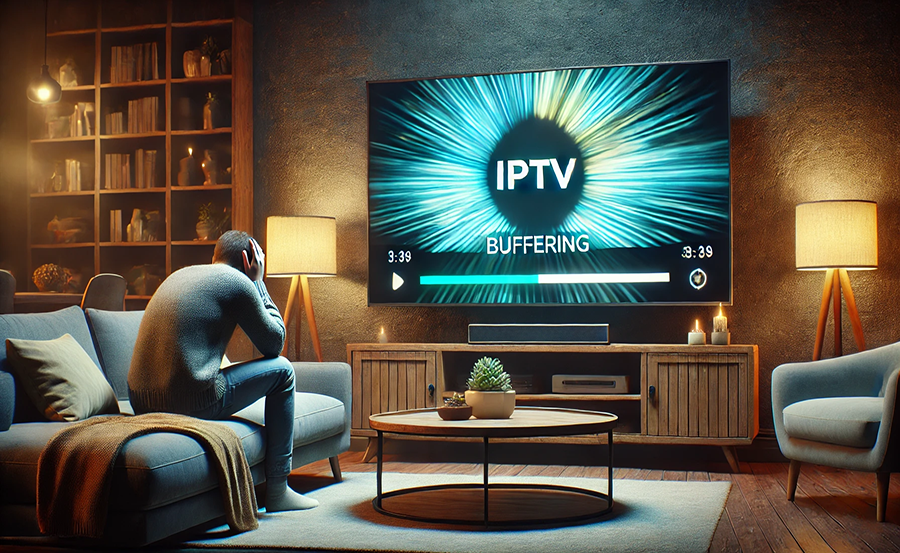In the fast-paced world of digital entertainment, nothing is as disruptive as the dreaded buffer wheel. Whether you’re watching your favorite sports team score or catching up on a new series, uninterrupted streaming is crucial. As IPTV rapidly becomes the go-to choice for streaming content, understanding the factors influencing its performance is key. One of the most significant aspects is bandwidth. But what exactly is bandwidth, and how does it impact IPTV buffering?
Understanding Bandwidth in the Context of IPTV
Bandwidth, simply put, refers to the maximum rate at which data can be transferred over an internet connection. Think of it like a highway. The wider the highway, the more cars can pass through at the same time without causing traffic jams. Similarly, higher bandwidth allows more data to flow smoothly, reducing the chances of buffering.
In the realm of IPTV, where data-rich video content is streaming continuously, having sufficient bandwidth is essential. This directly affects how smoothly the content will play on your devices, particularly during peak times.
Factors Determining Bandwidth Requirements
Several factors contribute to how much bandwidth you’ll need for optimal IPTV performance. The quality of the video stream is a primary determinant, with high-definition (HD) and ultra-high-definition (UHD) requiring more data throughput. Additionally, the number of devices consuming streaming content simultaneously impacts the total bandwidth demand at home.
Other characteristics like network hardware, ISP capabilities, and even peak usage hours also play critical roles. Understanding these elements helps in optimizing your IPTV experience.
IPTV and Sports Streaming: A Perfect Match?
As IPTV services expand, one of the most popular niches is sports streaming. With access to diverse sports channels from around the world, enthusiasts can now follow their favorite teams and events with remarkable ease. However, to achieve a seamless experience, adequate bandwidth is essential to handle the dynamic nature of live sports broadcasts.
Live sports require real-time transmission of high-quality video, often in HD or 4K. This means that the bandwidth requirements are substantially higher compared to standard video content, demanding robust internet plans from users who specialize in IPTV for sports streaming.
The Impact of Bandwidth on Live Sports
When bandwidth falls short during a live game, the consequences are immediate. You might miss a critical play or goal because of buffering. To prevent such interruptions, measure your current internet speed and compare it against the recommended bandwidth for live streaming in your preferred resolution.
Providers often suggest speeds upwards of 25 Mbps for HD streaming of live sports, though actual needs may vary based on service optimization and user settings.
How to Install IPTV: Bandwidth Considerations
If you’re new to the world of IPTV, setting it up can seem daunting, especially when considering bandwidth factors. A straightforward installation involves selecting an IPTV provider, subscribing to a package, and using a compatible device—usually a smart TV, streaming box, or application on a computer.
While this setup seems simple, ensuring that your internet bandwidth supports the service is crucial for a glitch-free experience. It’s recommended to test your connection first and, if necessary, upgrade your internet plan. Buy 1 Year IPTV Subscription and Enjoy Unlimited Content
Optimizing Your Network for IPTV
Firstly, consider the layout of your hardware. Place your router in a central location to maximize signal coverage, and use a wired connection for the IPTV device whenever possible. Wired connections generally offer more stable bandwidth compared to wireless ones.
Additionally, performing regular updates on both your device firmware and the IPTV application ensures optimal performance, reducing chances of software-induced buffering issues.
Master Your IPTV Entertainment: Tips for Smooth Streaming
Once you’ve got the right bandwidth and setup, mastering your IPTV entertainment is the next step. Customizing your viewing experience can involve everything from setting parental controls to creating favorites lists within your IPTV app.
Moreover, understanding and utilizing features such as automatic quality adjustment can make sure you’re always streaming at the best quality your connection can handle without sudden interruptions.
Advanced Features to Explore
Explore the EPG (Electronic Program Guide) available on most IPTV services to navigate through programs with ease. Additionally, Picture-in-Picture (PiP) functionality can enhance multitasking by allowing you to watch multiple channels simultaneously.
- Adjust the playback settings to match your internet speed.
- Take advantage of DVR capabilities to record your favorite shows.
- Experiment with different video players that support IPTV streams better.
Common Queries About Bandwidth and IPTV

What is the minimum bandwidth required for IPTV?
The minimum bandwidth varies based on the video quality, but generally, at least 5 Mbps is recommended for standard definition and 25 Mbps for high definition content.
How does bandwidth affect streaming quality?
Bandwidth directly affects the amount of data that can be streamed at a given time. Insufficient bandwidth can lead to lower quality and frequent buffering, especially for high-definition content or when multiple devices are online.
Can bandwidth be increased without changing internet plans?
Besides upgrading your plan, optimizing home network settings—like minimizing interference and using wired connections—can improve bandwidth usage efficiency, providing better streaming experiences.
Is higher bandwidth the only solution for eliminating buffering?
While higher bandwidth significantly reduces buffering, other solutions like optimizing your router placement, using Ethernet cables, and minimizing concurrent internet use also help in enhancing IPTV performance.
Engaging with IPTV technology offers both challenges and opportunities. By understanding and implementing the right bandwidth and network strategies, you can immerse yourself fully into the world of digital entertainment without interruptions. Whether you’re cheering for a sports match or unwinding with a movie, a little technical know-how goes a long way in ensuring seamless streaming.
How to Deal with IPTV Compatibility Issues on Different Devices





